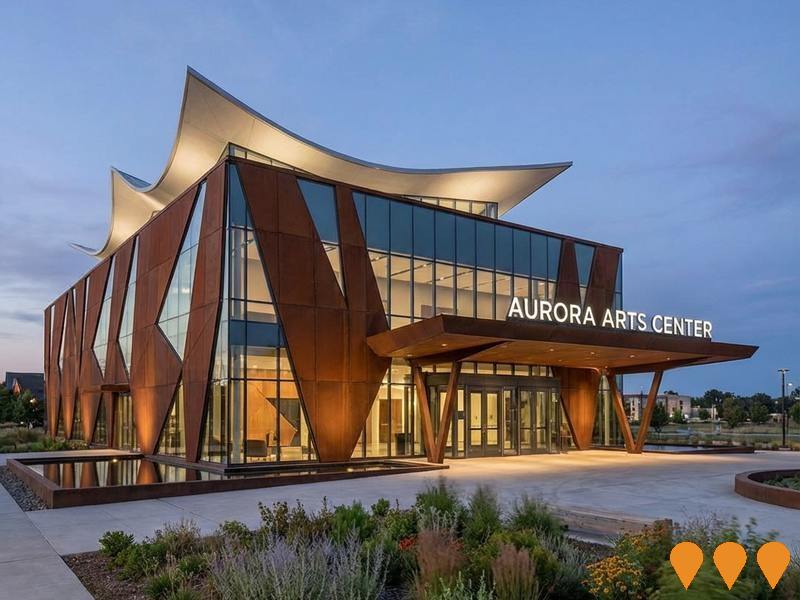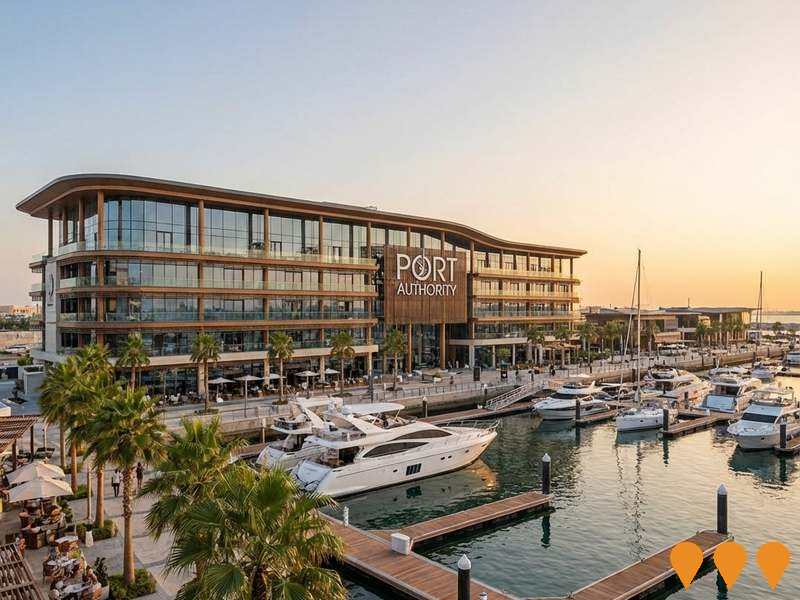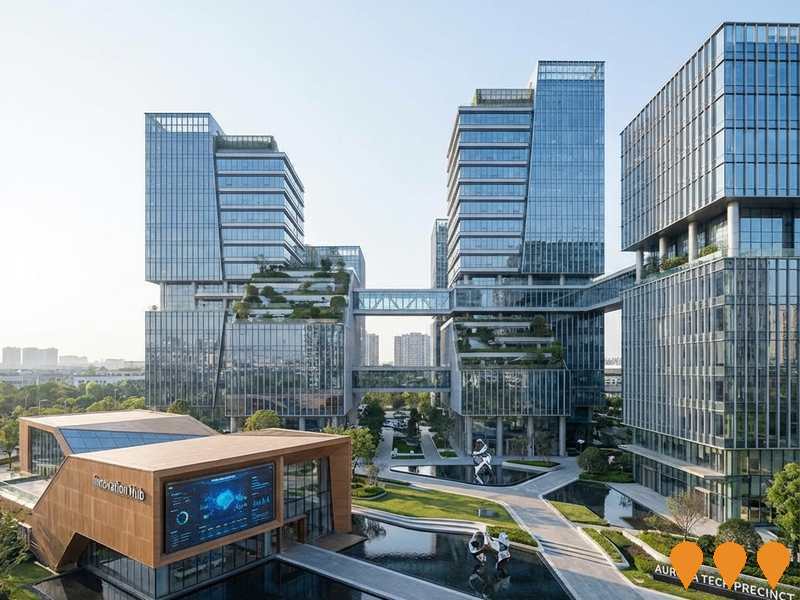Chart Color Schemes
est. as @ -- *
ABS ERP | -- people | --
2021 Census | -- people
Sales Activity
Curious about local property values? Filter the chart to assess the volume and appreciation (including resales) trends and regional comparisons, or scroll to the map below view this information at an individual property level.
Find a Recent Sale
Sales Detail
Population
Population growth drivers in Corowa Surrounds are strong compared to national averages based on AreaSearch's ranking of recent, and medium to long-term trends
Corowa Surrounds' population is approximately 7,686 as of August 2025. This figure represents an increase of 424 people since the 2021 Census, which recorded a population of 7,262. The ABS estimated resident population in June 2024 was 7,507, and there were 120 validated new addresses added after the Census date. This results in a population density of 1.7 persons per square kilometer. Corowa Surrounds' growth rate of 5.8% since the 2021 Census exceeds the non-metro area's growth rate of 4.8%. Interstate migration contributed approximately 82.6% of overall population gains in recent periods.
AreaSearch uses ABS/Geoscience Australia projections for each SA2 area, released in 2024 with a base year of 2022. For areas not covered by this data, AreaSearch utilises NSW State Government's SA2 level projections, released in 2022 with a base year of 2021. Growth rates by age group from these aggregations are applied to all areas for years 2032 to 2041. Based on projected demographic shifts, above median population growth is expected for Australia's non-metropolitan areas. Corowa Surrounds is projected to expand by 1,499 persons to 2041, with an overall increase of 17.2% over the 17-year period.
Frequently Asked Questions - Population
Development
Recent residential development output has been above average within Corowa Surrounds when compared nationally
Corowa Surrounds averaged approximately 42 new dwelling approvals per year over the past five financial years, totalling 213 homes. As of FY-26, six approvals have been recorded. On average, each dwelling has accommodated around 2.3 new residents annually between FY-21 and FY-25, reflecting robust demand that supports property values. The average construction cost value for these dwellings was $612,000, slightly above the regional average.
This financial year has seen $8.9 million in commercial approvals, indicating a primarily residential area. When compared to Rest of NSW, Corowa Surrounds exhibits comparable building activity per person, contributing to market stability aligned with regional trends, although recent periods have shown some moderation in development activity. Recent construction consists of 97.0% standalone homes and 3.0% townhouses or apartments, maintaining the area's low-density nature and attracting space-seeking buyers.
With around 274 people per approval, Corowa Surrounds reflects a low-density area. By 2041, it is projected that Corowa Surrounds will grow by approximately 1,320 residents. Construction activity is maintaining a reasonable pace with this projected growth, but buyers may face increasing competition as the population expands.
Frequently Asked Questions - Development
Infrastructure
Corowa Surrounds has emerging levels of nearby infrastructure activity, ranking in the 32ndth percentile nationally
Changes to local infrastructure significantly impact an area's performance. AreaSearch has identified 20 projects that could affect this region. Notable projects include Corowa Solar Farm, JBS Rivalea Corowa Grower Farm, Corowa Battery, and Corowa Regional Saleyards Redevelopment Project. The following list details those most likely to be relevant.
Professional plan users can use the search below to filter and access additional projects.
INFRASTRUCTURE SEARCH
 Denotes AI-based impression for illustrative purposes only, not to be taken as definitive under any circumstances. Please follow links and conduct other investigations from the project's source for actual imagery. Developers and project owners wishing us to use original imagery please Contact Us and we will do so.
Denotes AI-based impression for illustrative purposes only, not to be taken as definitive under any circumstances. Please follow links and conduct other investigations from the project's source for actual imagery. Developers and project owners wishing us to use original imagery please Contact Us and we will do so.
Frequently Asked Questions - Infrastructure
The Sebel Yarrawonga (Silverwoods Resort) - Stage 2 Expansion
Expansion of the luxury Sebel Yarrawonga hotel within the Silverwoods Golf and Lifestyle Resort. Stage 1 (63 rooms) opened in 2020. Stage 2 comprises the development of an additional 54 rooms to bring the total capacity to approximately 120 rooms. The resort features the 18-hole Black Bull Championship Golf Course, conference facilities, a health spa, and dining venues overlooking Lake Mulwala.
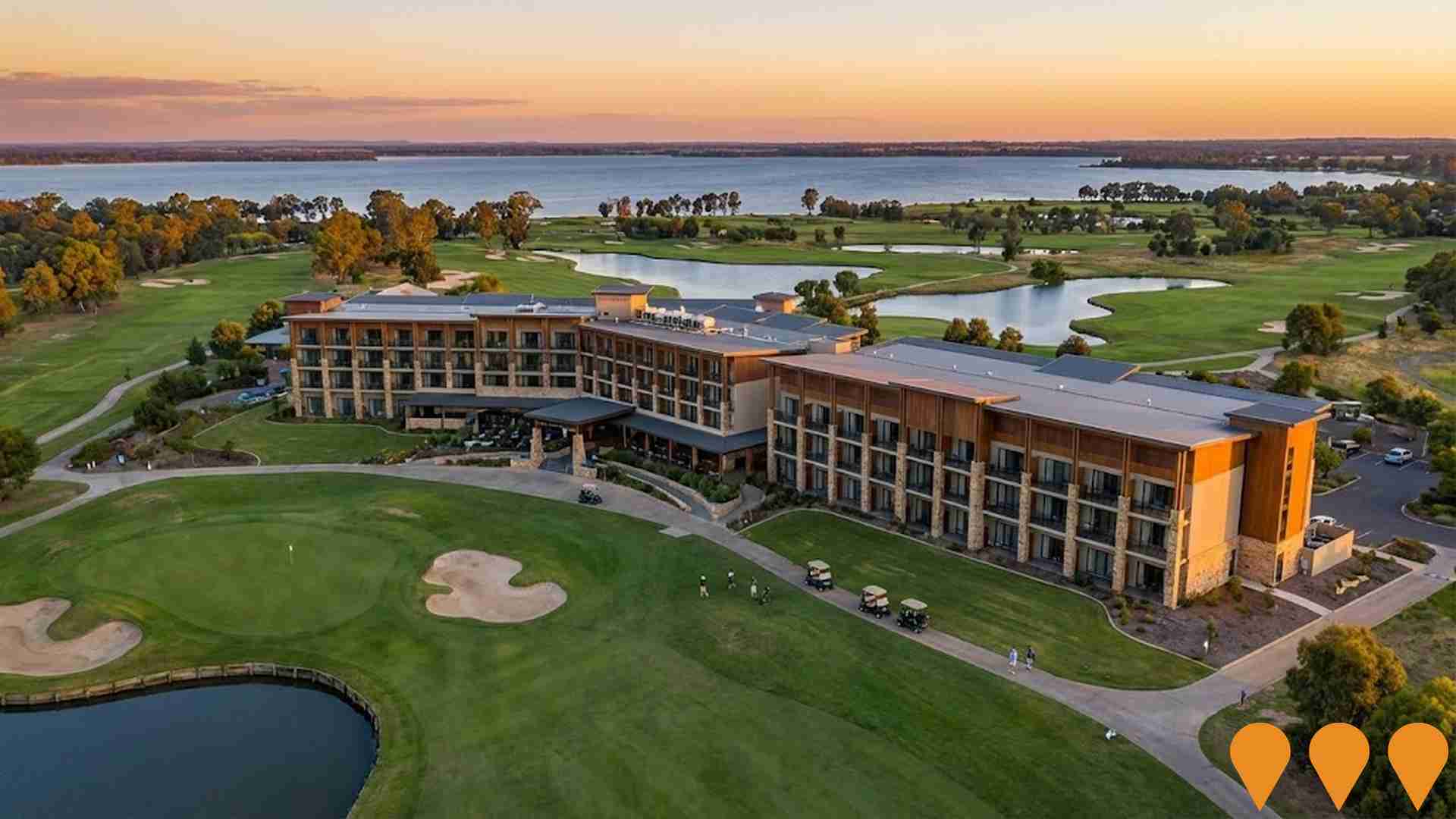
Corowa Regional Saleyards Redevelopment Project
The redevelopment includes a 23,662 square metre roof over livestock pens, a new office building, an expanded truck wash for biosecurity, and other operational improvements to protect stock and enhance welfare, positioning it as a premier sheep selling centre with training opportunities.
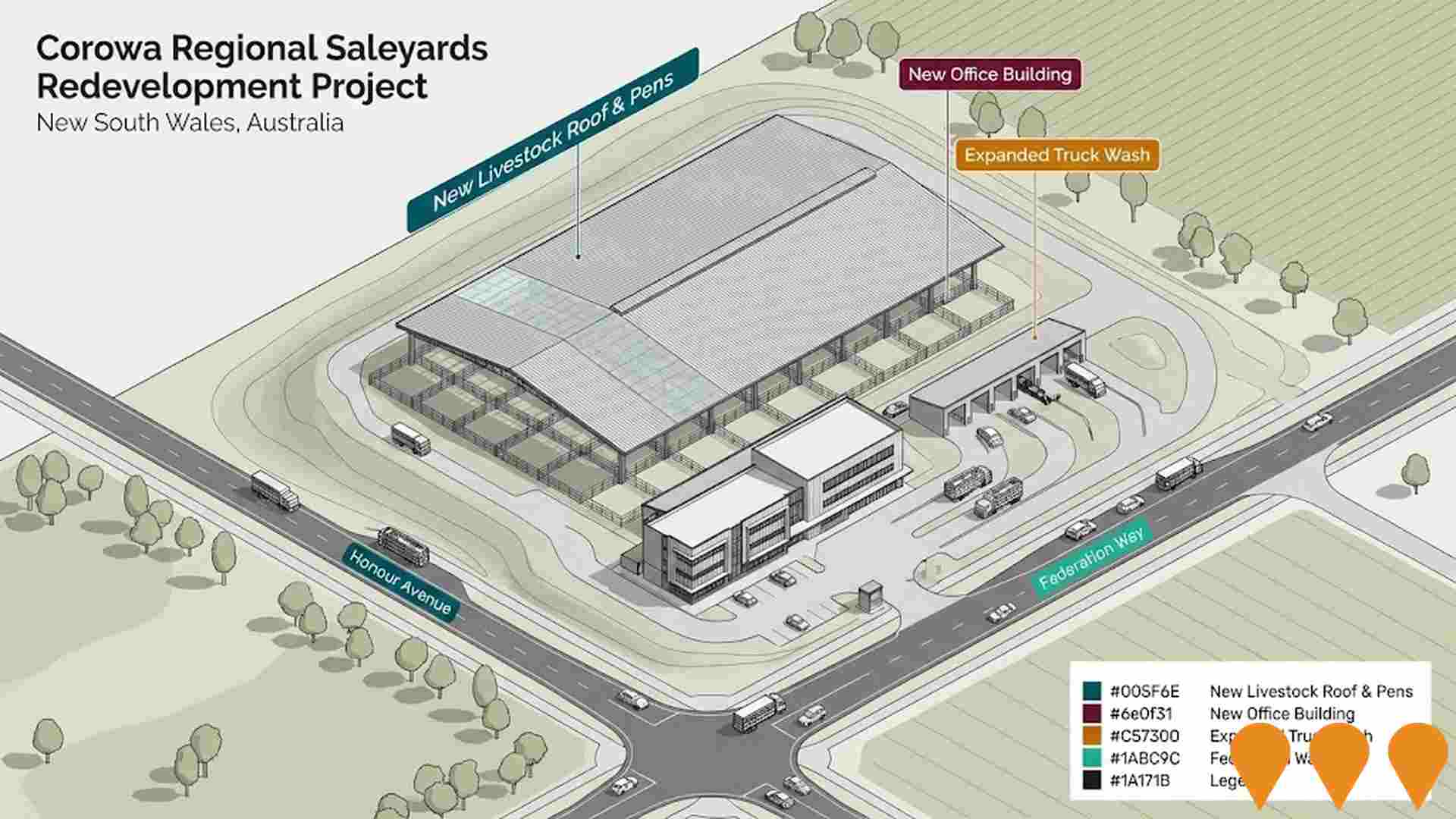
JBS Rivalea Corowa Grower Farm
The JBS Rivalea Corowa Grower Farm project involves modernizing pork farming operations at Corowa, NSW. This includes building state-of-the-art growing and breeding facilities to improve sustainability, biosecurity, animal welfare, environmental performance, and staff safety. Key features include separating growing and breeding farms for better biosecurity, replacing ageing infrastructure in stages, enhancing environmental performance through circular economy systems like nutrient recycling and wastewater treatment, and aligning with industry-leading standards for work health and safety.
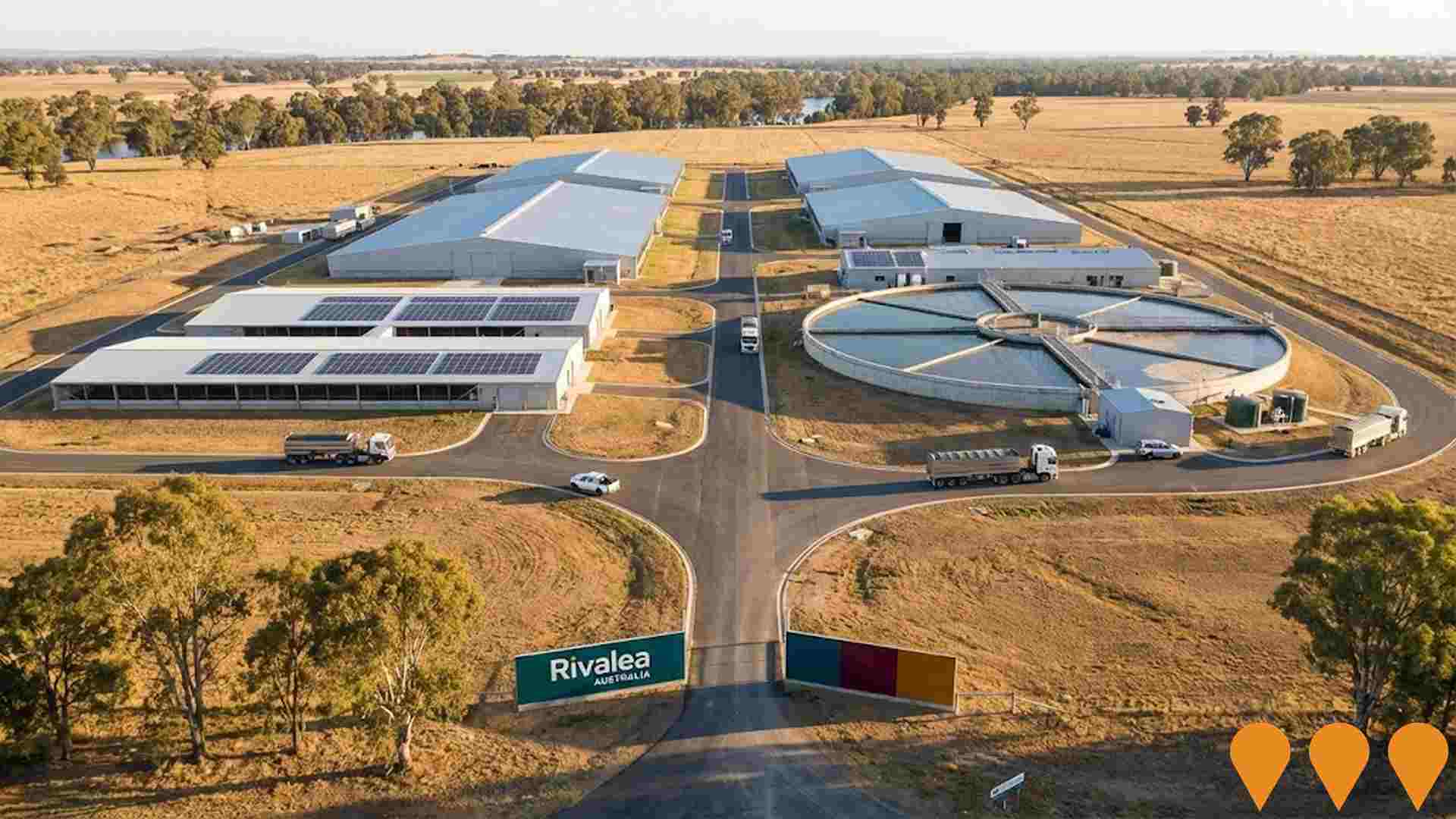
Corowa Battery
Proposed construction of a 100 MW / 200 MWh battery energy storage system (BESS) adjacent to the Corowa Substation on Wiradjuri country. The project aims to support renewable energy integration, reduce peak demand strain, enhance grid stability through Frequency Control Ancillary Services (FCAS), and create local jobs during construction.

Corowa Solar Farm
A 39 MW ground-mounted solar PV project over 92 hectares, expected to power 13,000 households and offset 59,000 tons of CO2 emissions annually. The project features a single axis tracking system and connects to the grid via Essential Energy's substation.

Yarrawonga Multisport Stadium
The Yarrawonga Multisport Stadium is an inclusive, modern facility designed for all ages, abilities, and ambitions, featuring a two-court indoor stadium, multipurpose rooms, a cafe, meeting spaces, and accessible amenities. It aims to be a hub for sport, health, and community connection, offering year-round activities such as training, competitions, fitness classes, youth programs, and community events.

Glanmire Park Estate
A 196ha residential development in Yarrawonga providing over 2,000 homes with open spaces, natural waterways, and community amenities near Lake Mulwala.

Yarrawonga Aged Care Facility
Modern 80-bed residential aged care facility with specialized dementia care units, rehabilitation services, and community day care programs. Features sustainable design principles and gardens for therapeutic programs.

Employment
Employment performance in Corowa Surrounds exceeds national averages across key labour market indicators
Corowa Surrounds has a diverse workforce with both white and blue collar jobs, particularly in manufacturing and industrial sectors. The unemployment rate was 2.9% as of June 2025, which is lower than the Rest of NSW's rate of 3.7%.
Employment growth over the past year was estimated at 4.0%. There were 3,943 residents employed with an unemployment rate of 1.8% below the regional average. Key employment sectors include agriculture, forestry & fishing, health care & social assistance, and manufacturing. The area has a strong focus on agriculture, forestry & fishing, with an employment share 3.4 times higher than the regional level.
However, health care & social assistance has a lower presence at 12.6% compared to the regional average of 16.9%. Over the year to June 2025, employment increased by 4.0%, while labour force grew by 4.5%, leading to a rise in unemployment rate by 0.4 percentage points. National employment forecasts from Jobs and Skills Australia indicate potential future demand within Corowa Surrounds. Based on these projections, local employment is expected to grow by approximately 5.2% over five years and 11.6% over ten years.
Frequently Asked Questions - Employment
Income
Income figures position the area below 75% of locations analysed nationally by AreaSearch
Corowa Surrounds' median income among taxpayers was $45,891 in financial year 2022. The average income stood at $53,271 during the same period. These figures are lower than those for Rest of NSW, which were $49,459 and $62,998 respectively. By September 2025, current estimates project median incomes to be approximately $51,678 and average incomes at around $59,988, based on a 12.61% growth in wages since financial year 2022. According to the 2021 Census, household, family, and personal incomes in Corowa Surrounds ranked between the 17th and 21st percentiles nationally. The data showed that 30.3% of individuals (2,328) earned between $1,500 - $2,999 annually, which is consistent with broader regional trends at 29.9%. Despite modest housing costs allowing for 88.2% income retention, total disposable income ranked at the 22nd percentile nationally.
Frequently Asked Questions - Income
Housing
Corowa Surrounds is characterized by a predominantly suburban housing profile, with above-average rates of outright home ownership
Corowa Surrounds' dwelling structure, as per the latest Census, consisted of 92.2% houses and 7.7% other dwellings. In comparison, Non-Metro NSW had 89.8% houses and 10.2% other dwellings. Home ownership in Corowa Surrounds was 48.8%, with mortgaged dwellings at 33.0% and rented ones at 18.2%. The median monthly mortgage repayment was $1,300, higher than Non-Metro NSW's average of $1,285. The median weekly rent in Corowa Surrounds was $265, compared to Non-Metro NSW's $235. Nationally, Corowa Surrounds' mortgage repayments were lower at $1,300 versus the Australian average of $1,863, and rents were substantially lower at $265 compared to the national figure of $375.
Frequently Asked Questions - Housing
Household Composition
Corowa Surrounds has a typical household mix, with a fairly typical median household size
Family households account for 69.3% of all households, including 24.5% couples with children, 36.6% couples without children, and 7.8% single parent families. Non-family households constitute the remaining 30.7%, with lone person households at 28.1% and group households comprising 2.6% of the total. The median household size is 2.3 people, which aligns with the average for the Rest of NSW.
Frequently Asked Questions - Households
Local Schools & Education
Corowa Surrounds faces educational challenges, with performance metrics placing it in the bottom quartile of areas assessed nationally
The area's university qualification rate is 13.0%, significantly lower than the NSW average of 32.2%. This presents both a challenge and an opportunity for targeted educational initiatives. Bachelor degrees are most common at 9.6%, followed by postgraduate qualifications (1.8%) and graduate diplomas (1.6%). Trade and technical skills are prominent, with 42.2% of residents aged 15+ holding vocational credentials - advanced diplomas (9.2%) and certificates (33.0%).
Educational participation is high at 26.8%, including 11.0% in primary education, 7.6% in secondary education, and 1.8% pursuing tertiary education. There are six schools operating within Corowa Surrounds, educating approximately 318 students. The educational mix includes five primary schools and one K-12 school. Local school capacity is limited at 4.1 places per 100 residents compared to the regional average of 9.4, leading many families to travel for schooling.
Frequently Asked Questions - Education
Schools Detail
Nearby Services & Amenities
Transport
Transport servicing is low compared to other areas nationally based on assessment of service frequency, route connectivity and accessibility
Transport analysis shows 287 active transport stops in Corowa Surrounds, including train and bus services. These stops are served by 44 individual routes, offering a total of 388 weekly passenger trips. Transport accessibility is rated good, with residents located an average of 232 meters from the nearest stop.
Service frequency averages 55 trips per day across all routes, equating to approximately one weekly trip per stop.
Frequently Asked Questions - Transport
Transport Stops Detail
Health
Health performance in Corowa Surrounds is well below average with prevalence of common health conditions notable across both younger and older age cohorts
Corowa Surrounds faces significant health challenges, with common conditions prevalent among both younger and older age groups. Private health cover is low, at approximately 47% of the total population (~3,589 people), compared to the national average of 55.3%.
The most common medical conditions are arthritis (12.7%) and asthma (8.9%). Around 60.0% of residents report no medical ailments, slightly lower than the Rest of NSW figure of 60.6%. Approximately 30.4% of residents are aged 65 and over (2,338 people). Health outcomes among seniors show some challenges but perform better than the general population in health metrics.
Frequently Asked Questions - Health
Cultural Diversity
The latest Census data sees Corowa Surrounds placing among the least culturally diverse areas in the country when compared across a range of language and cultural background related metrics
Corowa Surrounds had a cultural diversity below average, with 89.4% of its population being citizens, 92.4% born in Australia, and 97.9% speaking English only at home. Christianity was the main religion in Corowa Surrounds, comprising 59.1% of people, compared to 58.1% across Rest of NSW. The top three ancestry groups were English (33.9%), Australian (32.0%), and Irish (10.9%).
Notably, Scottish was overrepresented at 9.5%, German at 3.8%, and Korean at 0.2%.
Frequently Asked Questions - Diversity
Age
Corowa Surrounds ranks among the oldest 10% of areas nationwide
Corowa Surrounds has a median age of 50, which is higher than Rest of NSW's figure of 43 and also above the national average of 38. The 65-74 age group is particularly strong in Corowa Surrounds at 16.4%, compared to Rest of NSW's figure and well above the national average of 9.4%. Meanwhile, the 25-34 cohort is less prevalent at 9.0%. According to the 2021 Census, the 75 to 84 age group has grown from 9.3% to 10.7% of the population, while the 55 to 64 cohort has declined from 14.7% to 13.6%. By 2041, demographic modeling suggests that Corowa Surrounds' age profile will change significantly. The 75 to 84 age cohort is projected to grow by 251 people (31%), from 822 to 1,074. Conversely, the number of people in the 15 to 24 age range is expected to fall.
